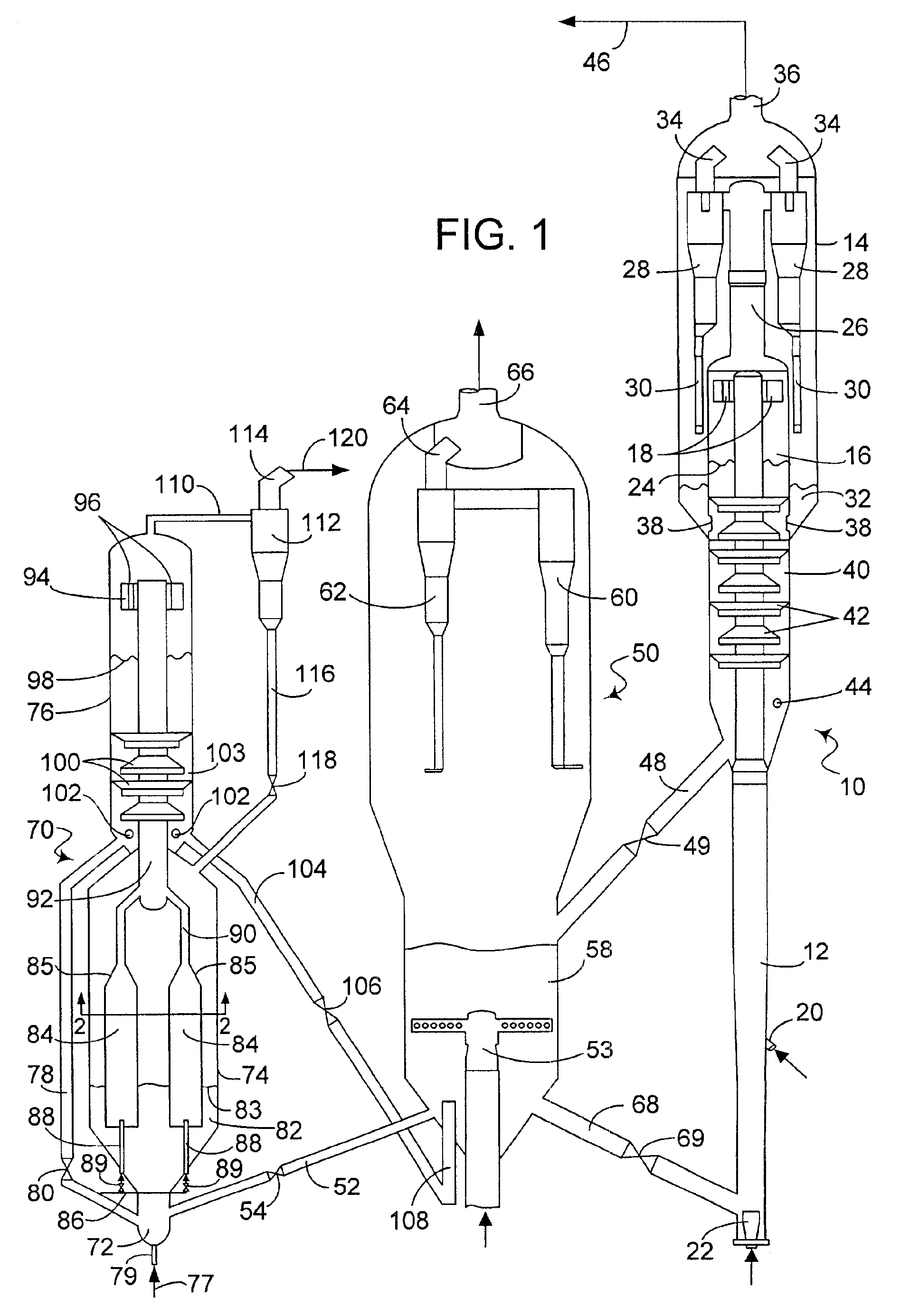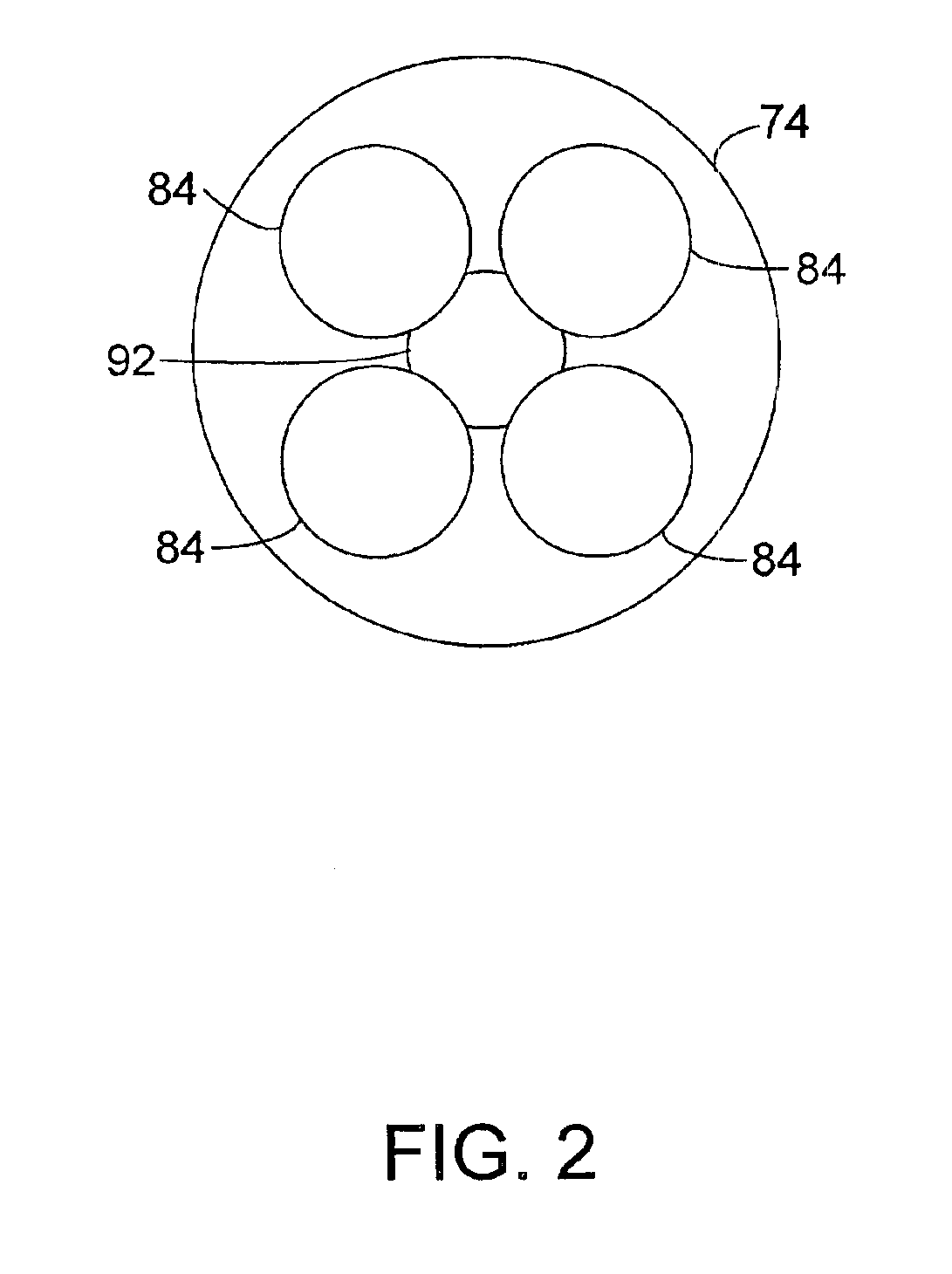Process and apparatus for upgrading FCC product with additional reactor with catalyst recycle
a technology of catalyst recycling and catalyst, which is applied in the field of process for upgrading catalytic cracking hydrocarbon feeds, can solve the problems of increasing the undesirable cracking of dry gas and lpg, increasing the catalyst temperature, etc., and achieves the cracking activity of fcc catalyst, moderate the cracking activity, and increase the undesirable cracking
- Summary
- Abstract
- Description
- Claims
- Application Information
AI Technical Summary
Benefits of technology
Problems solved by technology
Method used
Image
Examples
example
An investigation was conducted to determine the effect of mixing spent catalyst and regenerated catalyst on reactor temperature. At a spent to regenerated catalyst ratio of 1:1, with an FCC reactor vessel operating at 527° C. (980° F.) and a regenerator operating at 704° C. (1300° F.), the catalyst introduced to the secondary reactor will be 616° C. (1140° F.) giving a reactor temperature around 482° C. (900° F.). Hence, the temperature of the secondary reactor will be in the range that promotes hydrogen transfer over catalytic cracking reactions.
PUM
| Property | Measurement | Unit |
|---|---|---|
| velocity | aaaaa | aaaaa |
| velocity | aaaaa | aaaaa |
| boiling | aaaaa | aaaaa |
Abstract
Description
Claims
Application Information
 Login to View More
Login to View More - R&D
- Intellectual Property
- Life Sciences
- Materials
- Tech Scout
- Unparalleled Data Quality
- Higher Quality Content
- 60% Fewer Hallucinations
Browse by: Latest US Patents, China's latest patents, Technical Efficacy Thesaurus, Application Domain, Technology Topic, Popular Technical Reports.
© 2025 PatSnap. All rights reserved.Legal|Privacy policy|Modern Slavery Act Transparency Statement|Sitemap|About US| Contact US: help@patsnap.com



